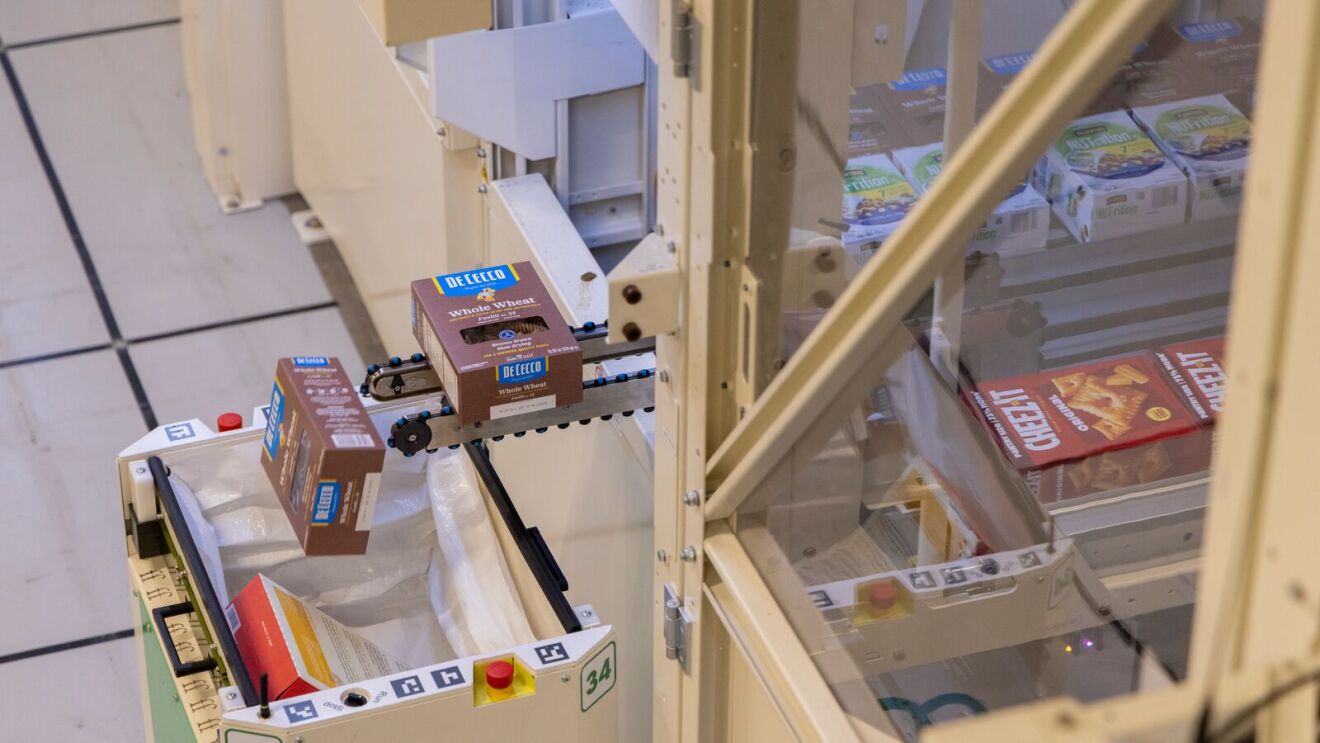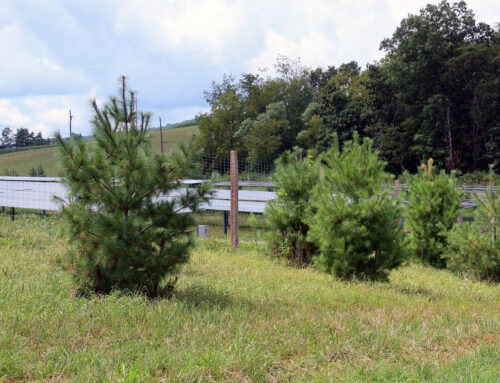Has Amazon Found Its Grocery Solution?
November 17, 2025
In 2022, Amazon CEO Andy Jassy sounded warning bells in a watershed letter admitting defeat on the chain’s grocery business. Earlier this year, he updated shareholders with a “very bullish” future. Today, we have a glimpse of the scale of the strategy.
Amazon wants to go all-in on a one-stop shop.
On Nov. 5, Amazon unveiled a concept store in Plymouth Meeting, Pennsylvania, wherein 10,000 square feet of the local Whole Foods features an automated micro-fulfillment center operated by Amazon. Stocked with over 12,000 items, the store features conventional grocery items not traditionally stocked at Whole Foods, due to its quality standards.
The system uses ShopBot robots to retrieve, sort and stage products before handing them off to employees to finalize it for customer delivery or pickup.

For brand loyalists who still want to shop at Whole Foods, this solution endeavors to streamline their grocery run by offering their go-to brands in one location.
A separate trial in Chicago that has been going strong for over a year offers a less “behind-the-scenes” look at Amazon’s plan. Operating on the second floor of a Whole Foods, in the specialty grocer’s former coffee shop, is a 3,800 square foot Amazon Grocery stocked with conventional legacy CPGs such as Coca-Cola and Bounty.
The intent is clear, to position Amazon’s grocery in the shadow of the success of Whole Foods. Additionally, despite the e-commerce giant purchasing the organic grocer in 2017, its operations have been largely sovereign. Earlier this year, however, a reorganization brought much of the Whole Foods leadership team as Amazon employees, auguring a new era of integrated commerce.
Amazon’s latest strategy also builds upon its online grocery dreams to expand Same- and Next-Day Delivery services to an additional 4,000 “smaller” areas by the end of the year.
The goal – more Amazon everywhere.
Why It Works
By combining its conventional grocery business with Whole Foods’ footprint legacy brand appeal, Amazon will be better positioned to take on competitors, such as Walmart and Target, while simultaneously positioning Whole Foods against its growing regional and national competition from retailers such as Sprouts Farmer’s Market, MOM’s Organic Market, and even Trader Joe’s.
Jason Buechel, VP of Amazon Worldwide Grocery Stores and Whole Foods CEO, noted how customers enjoy the convenience of one-stop shopping, in a statement about the Pennsylvania location.
“This new concept store experience allows customers to get everything on their shopping list in one convenient stop or one online order, combining quality with convenience while still delivering the exceptional shopping experience customers expect,” he said.
The typical consumer shops 3.6 channels, with the number rising to 4 for those who prioritize health or climate change, according to a recent report from PwC. This practice leads to missed opportunities for retailers to gain a larger share of the grocery basket.
By offering more products in-store, the hope is consumers would easily be able to get everything they need in a single run.
Despite not explicitly stating plans to expand the Chicago or Pennsylvania initiative, the company has made it clear that it will continue to iterate on this overall concept.
Whole Foods’ New Value Proposition
Amazon’s Whole Foods is working overtime to cater to today’s value-driven shopper.
Chief merchandizing and marketing officer Sonya Gafsi Oblisk noted at a recent event that this shopper need state is redefining shelf anatomy.
“We want our shoppers to walk in and see a sea of yellow,” she said, referring to the sale signs that signal deep discounts across all categories.
Whole Foods’ uncompromising quality standards and premium assortment is not driving the results the brand is looking for in the current market. The expansion of its private label portfolio and aggressive promotional strategy have helped to drive down cart sizes, but it continues to face an image problem with historic premium pricing compared to traditional grocery.
Amazon, on the other hand, has been hard at work to drive value. In October, the brand launched a private label portfolio of grocery staples with most products priced under $5, signaling an intent to capture price-conscious shoppers.
NielsenIQ estimates that as much as 57% of shoppers are cautious or struggling with their spending, plus more shoppers feel worse off financially than a year before than at the top of the year. These factors have manifested themselves in consumer shopping behaviors, and Amazon is taking a proactive approach to protect their grocery interests.
The Tightrope
Amazon must be careful, or it can compromise what it has achieved. Whole Foods has gradually built its brand equity through consumer trust in its quality and reliability of its assortment.
Both pilots have clearly delineated where Whole Foods ends and Amazon services begin, however, time will tell if the consumer will understand the distinction between a Whole Foods’ approved item and an Amazon offering. The blended assortment plan comes even as Whole Foods redoubles its commitment to only sourcing high-quality products. Last year, for example, it tightened its animal welfare standards.
The timing for the strategy is also tricky. When consumers are stepping down spending across all areas, health & wellness is the only category into which they’re purchasing deeper, according to recent data sent exclusively to The Food Institute conducted by CivicScience.
This is likely a result of the personal health movement that has characterized 2025.
So, a question forms: does the Whole Foods customer value this assortment complication in exchange for cheaper grocery runs?
The better-for-you shoppers that tend to shop Whole Foods have, on average, a 12% larger budget than the traditional shopper, according to a dunnhumby report on the topic. Plus, these shoppers care more about the quality and less about the price than traditional shoppers.
Nevertheless, in Amazon’s case, the retailers are also working together to offer accessibility, driving larger baskets filled with the diverse assortments of conventional and natural/organic options that the average American already purchases.
If this Whole Foods reposition goes national, and resonates with its consumer, it could cement the retailer’s market position. For now, Amazon is proceeding with caution, testing its markets to ensure it doesn’t erode Whole Foods’ image.
Food for Thought Leadership
This Episode is Sponsored by: Performance Foodservice
How important is it as a food distributor to build a brand for foodservice – especially since consumers may never see or recognize it? Mike Seidel, vice president of procurement at Performance Foodservice Corporate, shares how the company views the development of its existing foodservice brands, including Roma and Contigo, and how they helped in the creation of its most recent Mediterranean concept Zebec.
Search
RECENT PRESS RELEASES
Related Post





